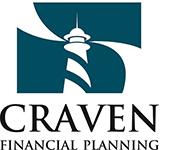RESPs by Craven Financial Planning
Discover how a Registered Education Savings Plan (RESP) in Canada helps families save for a child's post-secondary education through tax-deferred growth.
- Home
- RESPs by Craven Financial
Maximize Your Education Savings with an RESP
With tax-deferred growth, a Registered Education Savings Plan (RESP) is an excellent tool for building education savings.
Contributions can be invested in mutual funds, GICs, and ETFs, and the government boosts savings with the Canada Education Savings Grant (CESG) and Canada Learning Bond (CLB), making an RESP a flexible way to prepare for future education costs.
Common Questions and Answers:
- What investments can I hold in an RESP?
You can invest in mutual funds, GICs, ETFs, and bonds. - How does an RESP grow education savings?
RESP contributions grow tax-deferred, and government grants boost your savings. - What is the lifetime contribution limit for an RESP?
The lifetime contribution limit is $50,000 per child.
Ready to maximize your education savings with an RESP? Contact Financial Planner William (Bill) Craven today for personalized strategies.
Ready to take advantage of an RESP and boost your child’s education savings?
Whether you’re just getting started or looking to enhance your current investments, Financial Planner William (Bill) Craven will guide you in making smart decisions that align with your financial goals.
Get started today
A Registered Education Savings Plan (RESP) is a powerful tool that allows families to save for a child’s post-secondary education by contributing to a tax-deferred account.
Frequently Asked Questions about RESP
An RESP is a government-registered savings plan that helps families save for a child’s post-secondary education, with contributions growing tax-deferred.
The lifetime contribution limit for an RESP is $50,000 per beneficiary, with no annual limit.
The Canada Education Savings Grant (CESG) matches 20% of contributions, up to $500 per year, with a lifetime limit of $7,200.
No, RESP contributions are not tax-deductible, but the investment income and grants grow tax-deferred.
If your child doesn’t attend school, you can transfer the RESP to another beneficiary, or withdraw the contributions and investment earnings, though grants may need to be repaid.
RESPs allow investments in mutual funds, GICs, ETFs, stocks, and bonds.
An RESP can stay open for up to 36 years, giving flexibility if the child delays or returns to post-secondary education.

